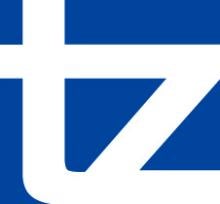Hayner Hoyt Corporation of Syracuse, NY, and several executives in its leadership team, admitted wrongdoing in connection with the settlement of a False Claims Act qui tam lawsuit that alleged a scheme targeted at the U.S. Department of Veteran’s Affairs. Hayner Hoyt allegedly created a sham company, 229 Constructors LLC, in order to procure contracts reserved for businesses operated by veterans who sustained disabling injuries in the line of duty.
At the center of the investigation were two non-veterans, Gary and Jeremy Thurston. Both hold top positions at Hayner Hoyt, and were controlling founders of 229 Constructors, the Hayner Hoyt subcontractor which has since closed its doors. The Thurstons, along with other co-conspirators, perpetrated a scheme in which Ralph Bennett, a true service-disabled veteran, appeared to be the president at 229 Constructors. In reality, Bennett was a warehouse employee at Hayner Hoyt who oversaw the company’s tool inventory and plowed snow from its property. Moreover, 229 Constructors itself was a ruse, as it was entirely staffed by Hayner Hoyt employees, and their spouses.
Hayner Hoyt leadership allegedly caused Bennett and 229 Contractors to issue certifications and statements to the government attesting to the shell company’s compliance with the service-disabled veteran-owned small business requirement. Jeremy Thurston went so far as to set up an email account in Bennett’s name that automatically forwarded all messages to him.
In addition to admitting their exploitation of a federal program intended for our nation’s veterans, the Defendants also acknowledged that their deception resulted in more than $1.3 million in government contracts that were falsely awarded to 229 Constructors.
According to the complaint filed in late 2014, the qui tam whistleblower first became aware of the Defendants’ intent to defraud the government at top-level officer meetings dating back to 2009, during which the Thurstons allegedly discussed exploiting Bennett’s service-disabled veteran status.
In recognition of his work before and during the false claims investigation, the whistleblower will receive $875,000 of the settlement funds, a sum which represents the relator’s share of the recovery.
This deception is a straightforward example of defense contractor fraud. The Defendants in this action knew, or should have known, that they were making false representations to the government in order to secure government funds. Their actions, as alleged in the whistleblower’s qui tam lawsuit, violated federal regulations and denied opportunities to legitimate small businesses owned by service-disabled veterans.




 />i
/>i